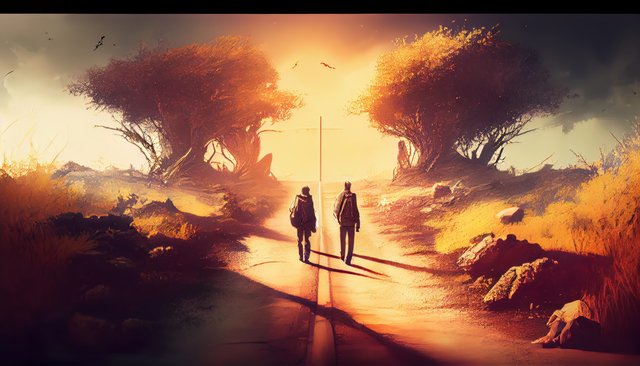The Healing Process After Scattering Ashes: A Personal Journey
Losing a loved one is never easy, and the process of grief is unique for each person. For many, the act of scattering ashes is an important part of saying goodbye—a meaningful ritual that allows them to honor their loved one’s life and create a final connection with the person they’ve lost. However, after the ashes are scattered, the journey doesn’t end. The healing process continues, and it can take many forms, deeply personal to each individual.
The Importance of Closure in Grief
The act of scattering ashes often symbolizes a final goodbye. Whether it’s done in a special location, such as a national park, the ocean, or a beloved family spot, it’s an intimate way to honor a loved one’s memory. For many, it’s an essential step toward emotional closure. While grief doesn’t have a timeline, the act of letting go in a place that was meaningful to the deceased helps to provide a sense of peace. The ceremonial act marks a symbolic point in the journey of grief where the individual is ready to move forward while still carrying the love and memories of their loved one.
The Healing Power of Nature
One of the most profound aspects of scattering ashes in nature is the way it connects people to the natural world and to the idea of life continuing beyond death. Nature has long been seen as a source of healing, and for many, scattering ashes in a place of natural beauty can help provide solace. Whether it's the vast openness of the ocean, the stillness of a mountain, or the tranquility of a forest, these natural environments remind us of the cycles of life, renewal, and the interconnectedness of all things. For those who scatter ashes in places like Yellowstone National Park, Mount Rainier, or the serene beaches of Pensacola, the peaceful surroundings often provide an emotional space to grieve, reflect, and even find moments of joy amid the sorrow.
The Significance of Ritual in the Healing Process
Rituals have long been used by cultures around the world to help process loss and transition through grief. The act of scattering ashes itself becomes a personal ritual—a moment of reflection, love, and letting go. For some, it is a deeply spiritual experience that allows them to connect with their beliefs, whether religious or philosophical. For others, it may be a simple but powerful way to acknowledge the end of one chapter and the beginning of another. Rituals like these allow individuals to mark time, honor a loved one’s memory, and move through the grief process in a way that feels right to them.
The Healing Through Memory
As time passes after the scattering of ashes, many find that their memories of the loved one become more cherished, and the pain of loss less acute. The place where the ashes were scattered often becomes a personal landmark—a place to visit, reflect, and remember the person who has passed. For example, families who scatter ashes in locations such as the Grand Tetons, Zion National Park, or other beloved spots often return in the years that follow. Each visit becomes a gentle way to reconnect with their loved one’s spirit, to honor the legacy they’ve left behind, and to find healing through memory.
Creating New Traditions of Remembrance
After scattering ashes, families often create new traditions to remember and celebrate the life of their loved one. These traditions may involve visiting the location where the ashes were scattered, lighting a candle on significant anniversaries, or participating in a charitable act that reflects the deceased’s passions. For some, this can include an annual gathering at the scattering site, where family and friends can share stories, remember the good times, and even plant a tree or create a small memorial to ensure that the loved one’s presence continues to be felt.
The Emotional Aftermath: What to Expect
Grief is a long process, and the emotions after scattering ashes can be mixed. While some feel a sense of peace, others might experience a deeper wave of sadness or loss. These feelings are normal and part of the healing process. It's important to remember that grief doesn’t follow a specific path and can fluctuate in intensity. Some people may feel a sense of relief after completing the ash scattering, while others may feel overwhelmed by the finality of it. There is no right or wrong way to feel—what matters is honoring your emotional journey and seeking support when necessary.
Support and Healing: Finding Comfort in Others
While scattering ashes is a deeply personal experience, it’s important to recognize the value of support from friends, family, or even professional counselors. Grief shared is grief lessened, and talking about the loved one’s life, their legacy, and the ceremony itself can help with the emotional processing. If you feel the need to speak to someone, consider grief counseling or support groups where you can share your experiences and hear from others who are walking the same path.
Carrying the Legacy Forward
One of the most powerful aspects of scattering ashes is the ability to carry the loved one’s legacy forward. As families continue their lives, they often find ways to embody the qualities of their loved one—whether it's through their own actions, careers, or passions. As time goes on, the emotional pain of loss often softens, and in its place is a profound sense of gratitude for the life that was lived and the memories that will never fade. For some, scattering the ashes is the first step in carrying that legacy forward, living in a way that honors the spirit of the one who has passed.
Conclusion: Healing Through Connection and Reflection
Scattering ashes is not just a one-time act—it is the beginning of a personal journey of healing, reflection, and remembrance. It allows for closure while opening up the opportunity to find peace, comfort, and ongoing connections with the deceased. Whether it’s the tranquility of nature, the comfort of a family ritual, or the strength found in shared memories, the healing process after scattering ashes is deeply individual and often transformative.
At BONAVENTURE, we understand how important this journey is, and our unaccompanied ash scattering services are designed to support families in creating a meaningful farewell. We provide the logistical support needed to honor your loved one in beautiful, serene locations, ensuring that their memory is respected and cherished. If you’re considering an ash scattering ceremony, we’re here to help make that process as smooth and meaningful as possible, helping you begin the healing journey with peace of mind.
Contact us today to learn more about our services and how we can help create a lasting tribute to your loved one.






























In this guide, we explore these two options in-depth, weighing the benefits of each. We’ll also discuss the growing flexibility of cremation, including the option to divide cremated remains for different family members or memorialization purposes.
Our goal is to offer clarity, comfort, and insight for families navigating this important decision.